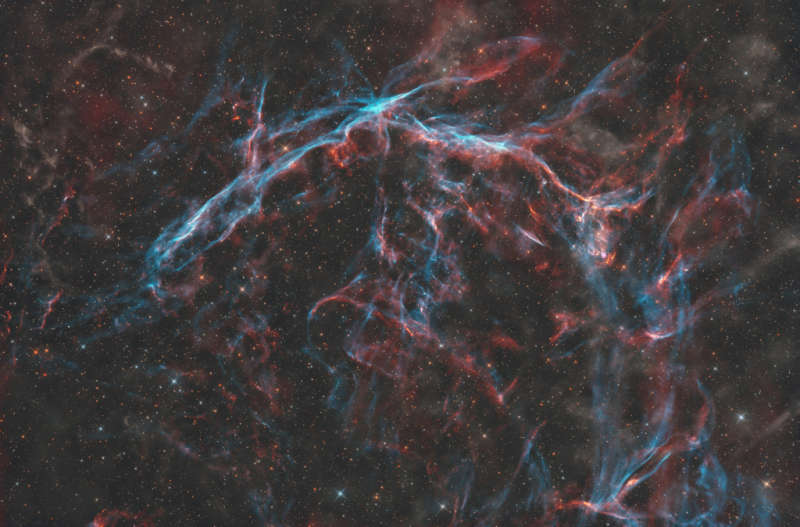Credit & Copyright: Thomas Lelu
Explanation:
There is a
quiet pulsar
at the heart of CTA 1.
The supernova remnant was
discovered as a
source of emission
at radio wavelengths
by astronomers in 1960
and since identified as the result of the
death explosion of a massive star.
But no radio pulses were detected from the expected pulsar, the
rotating neutron star
remnant of the massive star's collapsed core.
Seen about 10,000 years after the initial supernova explosion,
the interstellar debris cloud is faint at optical wavelengths.
CTA 1's visible wavelength
emission from still expanding shock fronts is revealed in
this deep telescopic image,
a frame that spans about 2 degrees across a
starfield in the northern constellation of Cepheus.
While no pulsar has since been found at radio wavelengths,
in 2008 the
Fermi Gamma-ray Space Telescope
detected pulsed emission from CTA 1,
identifying the supernova remnant's
rotating neutron star.
The source has been recognized as the first
in a growing class of pulsars that are quiet at radio wavelengths but
pulse
in high-energy gamma-rays.
1999 2000 2001 2002 2003 2004 2005 2006 2007 2008 2009 2010 2011 2012 2013 2014 2015 2016 2017 2018 2019 2020 2021 2022 2023 2024 2025 |
Yanvar' Fevral' Mart Aprel' Mai Iyun' Iyul' Avgust Sentyabr' Oktyabr' Noyabr' Dekabr' |
NASA Web Site Statements, Warnings, and Disclaimers
NASA Official: Jay Norris. Specific rights apply.
A service of: LHEA at NASA / GSFC
& Michigan Tech. U.
|
Publikacii s klyuchevymi slovami:
pulsar - gamma ray - gamma-izluchenie - Pul'sar - ostatok Sverhnovoi
Publikacii so slovami: pulsar - gamma ray - gamma-izluchenie - Pul'sar - ostatok Sverhnovoi | |
Sm. takzhe:
Vse publikacii na tu zhe temu >> | |
